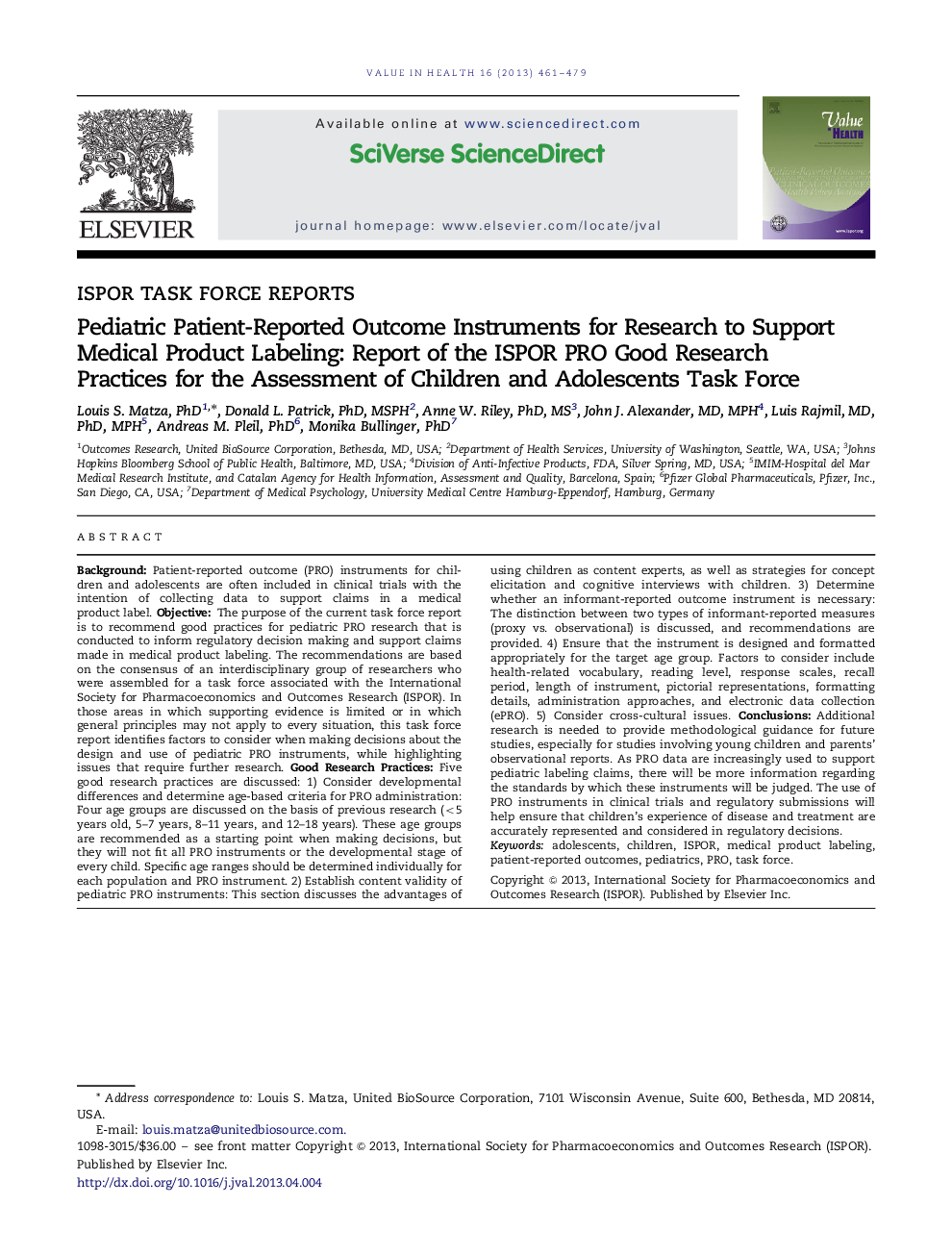| کد مقاله | کد نشریه | سال انتشار | مقاله انگلیسی | نسخه تمام متن |
|---|---|---|---|---|
| 989309 | 935426 | 2013 | 19 صفحه PDF | دانلود رایگان |
BackgroundPatient-reported outcome (PRO) instruments for children and adolescents are often included in clinical trials with the intention of collecting data to support claims in a medical product label.ObjectiveThe purpose of the current task force report is to recommend good practices for pediatric PRO research that is conducted to inform regulatory decision making and support claims made in medical product labeling. The recommendations are based on the consensus of an interdisciplinary group of researchers who were assembled for a task force associated with the International Society for Pharmacoeconomics and Outcomes Research (ISPOR). In those areas in which supporting evidence is limited or in which general principles may not apply to every situation, this task force report identifies factors to consider when making decisions about the design and use of pediatric PRO instruments, while highlighting issues that require further research.Good Research PracticesFive good research practices are discussed: 1) Consider developmental differences and determine age-based criteria for PRO administration: Four age groups are discussed on the basis of previous research (<5 years old, 5–7 years, 8–11 years, and 12–18 years). These age groups are recommended as a starting point when making decisions, but they will not fit all PRO instruments or the developmental stage of every child. Specific age ranges should be determined individually for each population and PRO instrument. 2) Establish content validity of pediatric PRO instruments: This section discusses the advantages of using children as content experts, as well as strategies for concept elicitation and cognitive interviews with children. 3) Determine whether an informant-reported outcome instrument is necessary: The distinction between two types of informant-reported measures (proxy vs. observational) is discussed, and recommendations are provided. 4) Ensure that the instrument is designed and formatted appropriately for the target age group. Factors to consider include health-related vocabulary, reading level, response scales, recall period, length of instrument, pictorial representations, formatting details, administration approaches, and electronic data collection (ePRO). 5) Consider cross-cultural issues.ConclusionsAdditional research is needed to provide methodological guidance for future studies, especially for studies involving young children and parents’ observational reports. As PRO data are increasingly used to support pediatric labeling claims, there will be more information regarding the standards by which these instruments will be judged. The use of PRO instruments in clinical trials and regulatory submissions will help ensure that children’s experience of disease and treatment are accurately represented and considered in regulatory decisions.
Journal: Value in Health - Volume 16, Issue 4, June 2013, Pages 461–479
